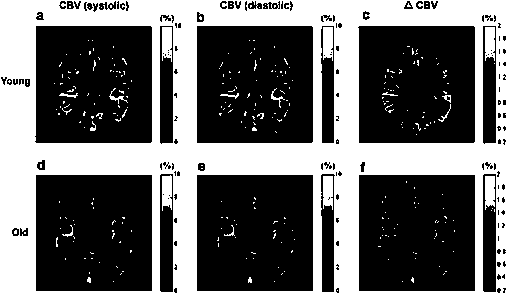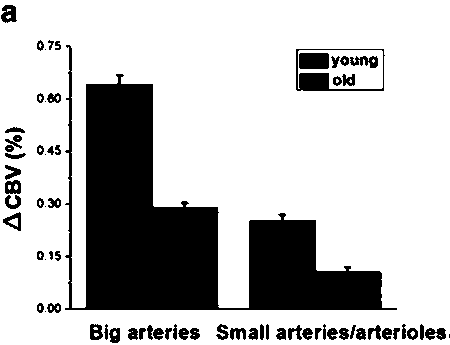Method for measuring arteriosclerosis based on magnetic resonance imaging without contrast-enhanced scanning
A technology that enhances scanning and arteriosclerosis, and is applied in magnetic resonance measurement, measurement using nuclear magnetic resonance imaging system, and measurement of magnetic variables.
- Summary
- Abstract
- Description
- Claims
- Application Information
AI Technical Summary
Problems solved by technology
Method used
Image
Examples
Embodiment Construction
[0016] specific implementation plan
[0017] Vascular compliance can be assessed using 4D dMRA technology with simultaneous sampling during the systolic and diastolic phases of the cardiac cycle. This has been confirmed by measuring internal carotid blood flow velocity using ECG-triggered time-resolved phase contrast MRI.
[0018] Such as figure 1 As shown, peak systole and early diastole were identified as a time delay, as an independent study phase. Pulsed ASL was applied at peak systolic and early diastolic phases, and ECG-triggered dMRA scans were performed at the corresponding phases. Systolic and diastolic arterial CBVs were calculated from tracer kinetic models. The tracer kinetic model is:
[0019] CBV =∫C(t)dt / ∫Ca(t)dt
[0020] C(t) = CBF • Ca(t)⊗R(t)
[0021] where Ca(t) is the concentration of the spin label in the artery, C(t) is the concentration of the spin label in a single pixel (Pixel) in the artery, and R(t) is the dwell function. C(t)=M(t)W(t)e t / T1 ...
PUM
 Login to View More
Login to View More Abstract
Description
Claims
Application Information
 Login to View More
Login to View More - R&D
- Intellectual Property
- Life Sciences
- Materials
- Tech Scout
- Unparalleled Data Quality
- Higher Quality Content
- 60% Fewer Hallucinations
Browse by: Latest US Patents, China's latest patents, Technical Efficacy Thesaurus, Application Domain, Technology Topic, Popular Technical Reports.
© 2025 PatSnap. All rights reserved.Legal|Privacy policy|Modern Slavery Act Transparency Statement|Sitemap|About US| Contact US: help@patsnap.com



